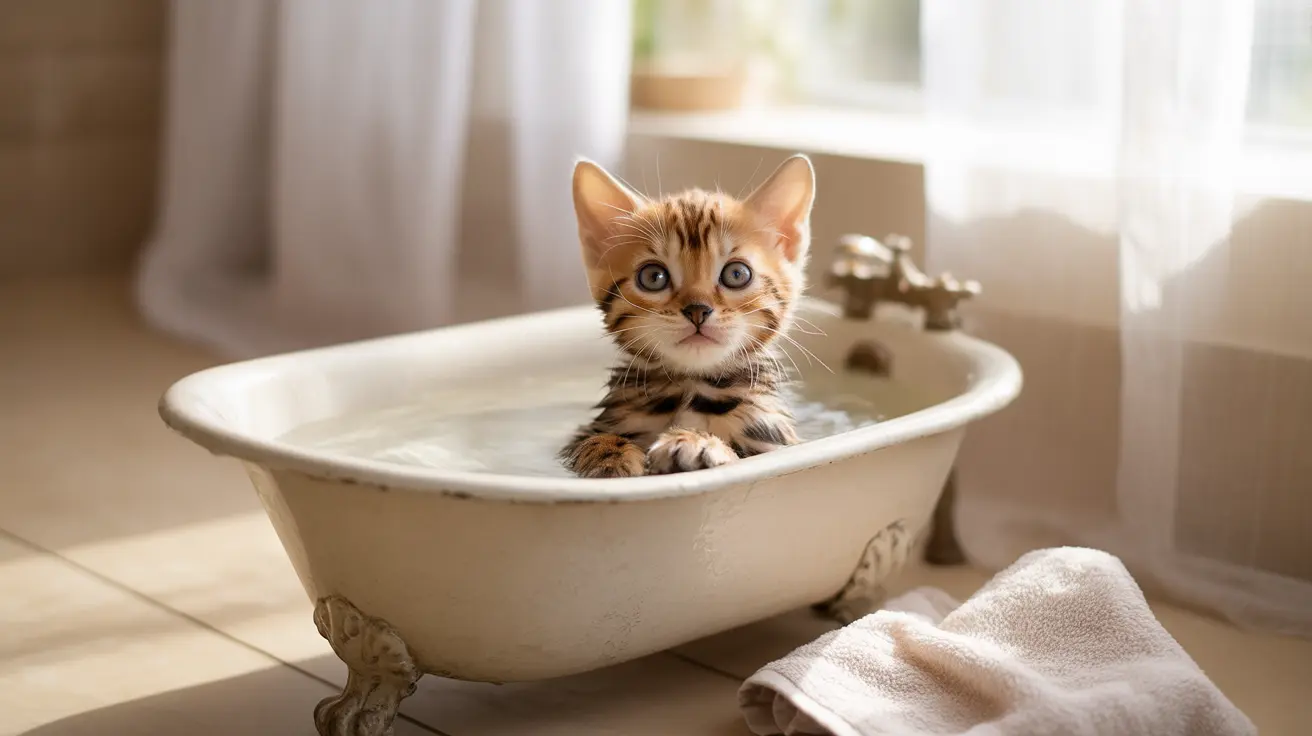While kittens are naturally excellent self-groomers, there are times when they need our help getting clean. Whether your kitten has gotten into something sticky, needs flea treatment, or simply requires some grooming assistance, knowing how to bathe a kitten properly is an essential skill for any pet parent.
In this comprehensive guide, we'll walk you through the entire process of bathing your kitten safely and effectively, from preparation to aftercare. We'll also share expert tips to make the experience as stress-free as possible for both you and your furry friend.
When Does Your Kitten Need a Bath?
Most kittens don't require frequent bathing, but certain situations call for a proper wash:
- Exposure to sticky or potentially toxic substances
- Severe flea infestations
- Excessive dirt or debris in their fur
- Medical conditions requiring therapeutic baths
- Long-haired kittens with grooming difficulties
Essential Supplies for Bathing Your Kitten
Before you begin, gather these crucial items:
- Kitten-specific shampoo (never use human products)
- Two soft, absorbent towels
- Non-slip mat for tub or sink
- Small cup or container for water
- Brush and comb
- Washcloth for face cleaning
- Treats for positive reinforcement
Preparing for Bath Time
Proper preparation is key to a successful kitten bath:
- Choose a warm, draft-free room
- Fill the sink or small tub with 1-2 inches of lukewarm water
- Test water temperature on your inner wrist
- Place a non-slip mat in the bathing area
- Have all supplies within arm's reach
- Trim nails and brush out tangles beforehand
Step-by-Step Bathing Process
Getting Started
Begin by introducing your kitten to the water gradually:
- Place kitten gently on the non-slip mat
- Let them explore the water at their own pace
- Speak softly and offer reassurance
- Use treats to maintain a positive atmosphere
Washing Your Kitten
Follow these steps for a thorough but gentle clean:
- Wet the body from neck down using cup or hands
- Apply small amount of kitten shampoo
- Massage gently in circular motions
- Clean face separately with damp washcloth
- Rinse thoroughly until water runs clear
- Keep water and soap away from eyes and ears
Drying and Aftercare
Proper drying is crucial to prevent chills:
- Wrap kitten immediately in a warm towel
- Pat dry gently - never rub
- Use second towel if needed
- Keep kitten in warm room until completely dry
- Brush once dry to prevent tangles
Safety Tips and Best Practices
Keep these important points in mind:
- Never leave your kitten unattended during bath time
- Maintain a calm, positive atmosphere
- Keep baths brief to minimize stress
- Always support your kitten's body
- Monitor for signs of distress or fatigue
Frequently Asked Questions
When is the safest age to start bathing a kitten, and how often should it be done?
The safest age to start bathing a kitten is between 8-12 weeks old. Most kittens only need baths when they get particularly dirty or for medical reasons, not on a regular schedule.
What are the essential supplies needed to bathe a kitten safely and comfortably?
Essential supplies include kitten-specific shampoo, soft towels, a non-slip mat, warm water, a small cup for rinsing, and a washcloth for face cleaning. Having treats on hand is also recommended for positive reinforcement.
How can I gently bathe my kitten without stressing them out or causing discomfort?
Introduce your kitten to water gradually, maintain a calm environment, use gentle handling techniques, and keep the experience positive with treats and praise. Never force or rush the process.
What precautions should I take to avoid harming my kitten's skin, eyes, or ears during a bath?
Use only kitten-specific products, keep water and soap away from eyes and ears, test water temperature carefully, and support your kitten's body throughout the bath. Clean the face separately with a damp washcloth.
How do I properly dry my kitten after a bath to prevent chills or discomfort?
Wrap your kitten immediately in a warm, absorbent towel, pat dry gently, and keep them in a warm, draft-free area until completely dry. Some kittens may tolerate a hair dryer on the lowest, cool setting.
Conclusion
Bathing your kitten doesn't have to be a stressful experience for either of you. With proper preparation, gentle handling, and positive reinforcement, bath time can become a bonding opportunity that sets the foundation for good grooming habits throughout your cat's life.
Remember to always prioritize your kitten's comfort and safety, and never hesitate to consult with your veterinarian if you have specific concerns about your kitten's grooming needs.






